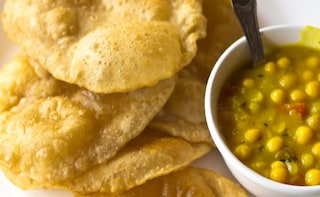It was sometime in January in the mid-80s; My entire house was yellow, and not because the family was inflicted with jaundice or some such. It was Saraswati Puja, a fairly big deal for Bengalis, and my aunts, cousins and grandmother had gotten themselves yellow saris in its various avatars. The entire house smelt of flowers, incense, with my aunt meticulously drawing the goddess' delicate feet at the threshold of every room with a rice paste. My focus was on a different kind of yellow though; in a big deep wok, simmering away to glory, was cholar dal (dal made with split Bengal gram). While my grandmother's wing woman always cooked the other dishes, she would take personal interest to make sure that the dal was nothing short of perfect. And therefore, constant stirring, monitoring, tasting, reducing of the flame would go on - a sight that I have never been able to wipe from my memory.
Advertisement
Advertisement
For the latest food news, health tips and recipes, like us on Facebook or follow us on Twitter and YouTube.
Advertisement
